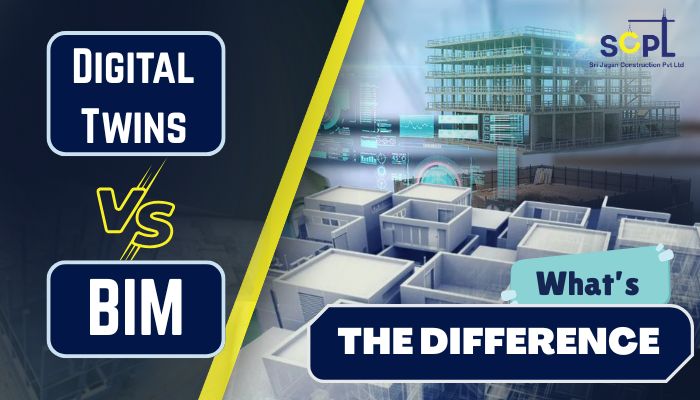Digital Twins vs BIM: What's the Difference

In the construction industry, technology has revolutionized the way projects are planned, executed, and managed. Two key concepts that have gained significant attention are Digital Twins and Building Information Modelling (BIM). While both technologies are used to create digital representations of physical assets, they serve different purposes and have distinct characteristics.
What is BIM?
BIM is a digital representation of the physical and functional characteristics of a building or infrastructure project and it involves creating detailed 3D models that incorporate information about the design, construction, and operation of the project. It is primarily used during the design and construction phases to improve collaboration, reduce errors, and enhance project efficiency.
What is a Digital Twin?
A Digital Twin is a virtual replica of a physical asset, such as a building, bridge, or city. It is a dynamic digital representation that simulates the behavior of the physical asset in real-time, using data from sensors, IoT devices, and other sources. These are used to monitor, analyze, and optimize the performance of the asset, and can be applied throughout the asset's lifecycle.
Key Differences
By understanding the differences between these technologies, the best building construction company in Odisha can leverage them to deliver projects with precision, efficiency, and the highest quality.
The main differences between BIM and Digital Twins are:
- Purpose: BIM is primarily used for design and construction, while Digital Twins are used for operations and maintenance.
- Scope: BIM focuses on the design and construction phases, while Digital Twins encompass the entire asset lifecycle.
- Data: BIM typically uses static data, while Digital Twins use real-time data from sensors and other sources.
Conclusion
In conclusion, these both powerful technologies can improve the construction and management of buildings and infrastructure projects. As a leading real estate company, SCPL recognizes the importance of embracing innovative technologies to simplify the construction process and exceed client expectations.
By combining these two, SCPL can create detailed digital models and virtual replicas of projects, enhancing collaboration, reducing errors, and optimizing asset performance. Whether you're building a modern residential home or a commercial complex, SCPL is committed to delivering exceptional results using the latest technologies.
